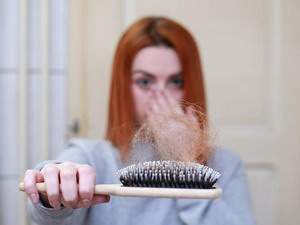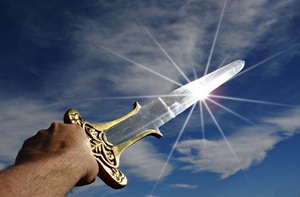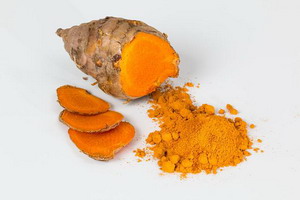 I was having a conversation with my brother the other day about my trials with my prostate over the last couple of years. Enlarged prostate is a very common issue that seems to hit men in their 60s. He was concerned since he is only 5 years younger than I. He wanted to know if I went on the common prostate drug, Finasteride. I hadn’t as by the time my condition was diagnosed I was too far gone and had to go for the plasma cannon treatment where they use electrically formed plasma to burn away the excess tissue. That did not sound like a fun option to him. Curiously, two days later my son was asking about prostate health wondering if this was a problem he would inherit. More specifically he wanted to know what he could do now to ward off such nastiness. When I told him that the source of the problem came down to excess 7-dihydrotestosterone, he said I needed to write an article about that so he would not have to look that up and figure out what to do with it. So here we are!
I was having a conversation with my brother the other day about my trials with my prostate over the last couple of years. Enlarged prostate is a very common issue that seems to hit men in their 60s. He was concerned since he is only 5 years younger than I. He wanted to know if I went on the common prostate drug, Finasteride. I hadn’t as by the time my condition was diagnosed I was too far gone and had to go for the plasma cannon treatment where they use electrically formed plasma to burn away the excess tissue. That did not sound like a fun option to him. Curiously, two days later my son was asking about prostate health wondering if this was a problem he would inherit. More specifically he wanted to know what he could do now to ward off such nastiness. When I told him that the source of the problem came down to excess 7-dihydrotestosterone, he said I needed to write an article about that so he would not have to look that up and figure out what to do with it. So here we are!
 Now all you women might think that this subject has nothing to do with you, but the other condition, DHT, commonly causes hair loss. In men, this causes classic male pattern hair loss, but in women, it is more about general hair loss. Of course, there are many other reasons for hair loss such as thyroid issues, autoimmune alopecia, fungal infection, celiac disease, and several others. Curiously, while excess DHT may cause hair loss on your head, for women it tends to increase hair growth in all the places you don’t want more hair. It is estimated that 50 million men and 30 million women currently suffer from DHT-caused hair loss.
Now all you women might think that this subject has nothing to do with you, but the other condition, DHT, commonly causes hair loss. In men, this causes classic male pattern hair loss, but in women, it is more about general hair loss. Of course, there are many other reasons for hair loss such as thyroid issues, autoimmune alopecia, fungal infection, celiac disease, and several others. Curiously, while excess DHT may cause hair loss on your head, for women it tends to increase hair growth in all the places you don’t want more hair. It is estimated that 50 million men and 30 million women currently suffer from DHT-caused hair loss.
 What is DHT? As the name dihydrotestosterone implies, it is derived from testosterone. In fact, it acts like super testosterone. It is roughly 5 times more powerful than regular testosterone. And like testosterone, DHT does a lot of really important things in your body. Little boys don’t grow into big boys without it. Women may find their development sexually is also slowed down. DHT is necessary for developing good muscle tone, and proper jaw development, and helps regulate your mood, bone density, and fat distribution. Men typically have more testosterone than women, and as roughly 10% of testosterone is converted to DHT each day, men tend to have higher levels of DHT. However, DHT production is different in different parts of the body. For instance, there is a lot of DHT conversion in the oil glands in the skin, and the rate of conversion is about 10 times higher in the prostate than elsewhere in the body. This is a good thing when a boy becomes a man, but not so good when he starts getting older.
What is DHT? As the name dihydrotestosterone implies, it is derived from testosterone. In fact, it acts like super testosterone. It is roughly 5 times more powerful than regular testosterone. And like testosterone, DHT does a lot of really important things in your body. Little boys don’t grow into big boys without it. Women may find their development sexually is also slowed down. DHT is necessary for developing good muscle tone, and proper jaw development, and helps regulate your mood, bone density, and fat distribution. Men typically have more testosterone than women, and as roughly 10% of testosterone is converted to DHT each day, men tend to have higher levels of DHT. However, DHT production is different in different parts of the body. For instance, there is a lot of DHT conversion in the oil glands in the skin, and the rate of conversion is about 10 times higher in the prostate than elsewhere in the body. This is a good thing when a boy becomes a man, but not so good when he starts getting older.
 As you begin to see, this DHT is a double-edged sword. At certain ages or in certain areas it is a good guy, but at other times or in certain areas the effects of DHT become negative. The primary driver of too much or too little DHT is the enzyme that converts the testosterone into DHT, the enzyme 5alpha reductase. Drugs that are used to reduce high levels of DHT do so by inhibiting this enzyme. Less enzyme means less conversion of testosterone to DHT. Part of my challenge with using such drugs lies in the fact that this enzyme converts lots of different hormones from one form into another. When you take a drug like this for hair loss or prostatic hypertrophy, it may help your symptoms, but how many other processes in the body is it messing up? One study I found showed that the use of Finasteride caused insulin resistance and fatty liver (in rats). In reality, the consequences will be highly variable with humans as we are all so different in how we are wired up genetically.
As you begin to see, this DHT is a double-edged sword. At certain ages or in certain areas it is a good guy, but at other times or in certain areas the effects of DHT become negative. The primary driver of too much or too little DHT is the enzyme that converts the testosterone into DHT, the enzyme 5alpha reductase. Drugs that are used to reduce high levels of DHT do so by inhibiting this enzyme. Less enzyme means less conversion of testosterone to DHT. Part of my challenge with using such drugs lies in the fact that this enzyme converts lots of different hormones from one form into another. When you take a drug like this for hair loss or prostatic hypertrophy, it may help your symptoms, but how many other processes in the body is it messing up? One study I found showed that the use of Finasteride caused insulin resistance and fatty liver (in rats). In reality, the consequences will be highly variable with humans as we are all so different in how we are wired up genetically.
 I remember years ago I took a lab test called a DUTCH test that checked all my hormones, including DHT. My DHT levels were way overboard. The test was checking metabolites (break-down byproducts) of my hormones excreted in my urine. Had I understood the consequences of this high reading way back then, I might have saved myself three surgeries and lots of unpleasantness. Unfortunately, I did not know much about DHT back then other than it was associated with male pattern baldness. I had no tendency toward baldness, so I dismissed that high reading. I was more interested in the fact that the test said I had almost zero cortisol production through the course of the day. These tests are available for about $500 from dutchtest.com if you are interested.
I remember years ago I took a lab test called a DUTCH test that checked all my hormones, including DHT. My DHT levels were way overboard. The test was checking metabolites (break-down byproducts) of my hormones excreted in my urine. Had I understood the consequences of this high reading way back then, I might have saved myself three surgeries and lots of unpleasantness. Unfortunately, I did not know much about DHT back then other than it was associated with male pattern baldness. I had no tendency toward baldness, so I dismissed that high reading. I was more interested in the fact that the test said I had almost zero cortisol production through the course of the day. These tests are available for about $500 from dutchtest.com if you are interested.
 So suppose you have been diagnosed with benign prostatic hypertrophy (BPH), or are trying to avoid hair loss that has begun. What do you do? The first step is medical. With BPH you need an exam to determine that no cancer is present. With hair loss, you want to make sure that you are not dealing with a thyroid hormone disorder, some autoimmune disease, some fungal infection, or whatever. Once that step is complete and those issues have been ruled out then you have to decide how you want to proceed. The natural herbal approach tries to do the same thing as drug therapy, just less intensely. Most herbs for this concern act either by inhibiting the alpha-reductase enzyme that converts the testosterone to DHT or blocking the action of DHT on the cells.
So suppose you have been diagnosed with benign prostatic hypertrophy (BPH), or are trying to avoid hair loss that has begun. What do you do? The first step is medical. With BPH you need an exam to determine that no cancer is present. With hair loss, you want to make sure that you are not dealing with a thyroid hormone disorder, some autoimmune disease, some fungal infection, or whatever. Once that step is complete and those issues have been ruled out then you have to decide how you want to proceed. The natural herbal approach tries to do the same thing as drug therapy, just less intensely. Most herbs for this concern act either by inhibiting the alpha-reductase enzyme that converts the testosterone to DHT or blocking the action of DHT on the cells.
Blocking agents:
Pygeum bark
Pumpkin seed oil
Stinging nettle
the drug Finasteride
Finasteride has possible side effects of water retention (affecting the heart), nausea, vomiting, rash, increased facial or body hair, sexual dysfunction, and insulin resistance.
Inhibiting agents:
Saw Palmetto
Pumpkin seeds
Stinging nettle root
Quercetin (onions, asparagus, berries)
Turmeric
Isoflavones (soy products)
These products have demonstrated the ability to reduce the levels of DHT in your body, which may slow hair loss and decrease prostate enlargement.
 As a counterpoint to all this information, as I was researching the subject, I found many websites that were dedicated to increasing DHT levels in the body. Since DHT is a super testosterone, it will help you build muscle. If your goal is to build massive muscles, but you don’t want to inject synthetic steroids, finding natural ways to increase DHT production is a way to do it. Increased DHT is also used to fight osteoporosis. So where you stand with DHT is really all about what your goals are. If you are young and into bodybuilding, your relation to your DHT levels is a lot different than if you are 60 years old and find it hard to pee because of an enlarged prostate. The tough choice involves either losing your hair or getting osteoporosis? What is more important, looking good or being able to walk?
As a counterpoint to all this information, as I was researching the subject, I found many websites that were dedicated to increasing DHT levels in the body. Since DHT is a super testosterone, it will help you build muscle. If your goal is to build massive muscles, but you don’t want to inject synthetic steroids, finding natural ways to increase DHT production is a way to do it. Increased DHT is also used to fight osteoporosis. So where you stand with DHT is really all about what your goals are. If you are young and into bodybuilding, your relation to your DHT levels is a lot different than if you are 60 years old and find it hard to pee because of an enlarged prostate. The tough choice involves either losing your hair or getting osteoporosis? What is more important, looking good or being able to walk?
 A couple of good studies have come out recently showing red light treatment is beneficial in restoring a head of hair. This may provide an alternative to tackling your DHT levels. This is the same type of red light that improves skin tone and reduces wrinkles. Unfortunately, I have only found one study for treating prostate issues with red light.
A couple of good studies have come out recently showing red light treatment is beneficial in restoring a head of hair. This may provide an alternative to tackling your DHT levels. This is the same type of red light that improves skin tone and reduces wrinkles. Unfortunately, I have only found one study for treating prostate issues with red light.
 So there you have it. DHT, like everything else in the body, has an optimal level that changes between people and at different ages. Too much or too little will cause you problems. Your individual guide to where you stand with DHT and your hormones, in general, is your symptoms. If you have no symptoms then don’t worry about it. But if you do, then gentle herbal therapy may be warranted if your symptoms are not severe. Let your body be the guide here.
So there you have it. DHT, like everything else in the body, has an optimal level that changes between people and at different ages. Too much or too little will cause you problems. Your individual guide to where you stand with DHT and your hormones, in general, is your symptoms. If you have no symptoms then don’t worry about it. But if you do, then gentle herbal therapy may be warranted if your symptoms are not severe. Let your body be the guide here.
Take care,
David
